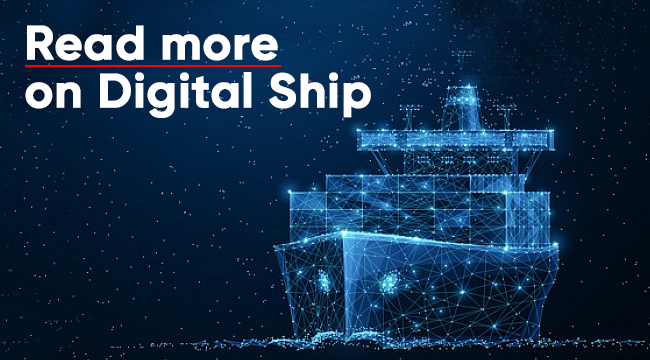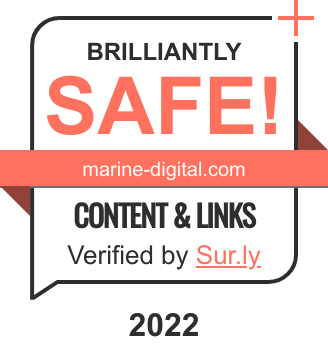Last week Marine Digital joined the Supply Chain Optimization panel at the Climate 2023 event organized by Climate Transformed. During this panel, Elena Biryukova, Chief ESG Officer at MarineDigital, Evan Vahouny, Chief Impact Officer at Proof, and Nathan Williams, Co-Founder of MineSpider discussed the software innovations that are revolutionizing the monitoring and reporting of emissions, upcoming regulations in different segments of supply chain and the impact they will have on the operations of thousands of companies.

Climate 2023 is the virtual exploration of the technologies, policies, and people that will drive toward a more sustainable and decarbonized global economy over the year ahead. The event addressed the near-term geo-political and policy challenges, as well as the funding requirements and breakthrough technologies essential to maintaining momentum towards Net Zero.
The impact on ocean health is still invisible

Over the Supply Chain Optimization panel discussion, we at Marine Digital highlighted that a lack of visibility and awareness of the negative impact of business and society on the ocean ecosystem leads to an illusion that this is a problem for fleet managers, fleet owners, and maritime regulators only.
Meanwhile, the commercial fleet emits around 400 000 million tonnes of CO2 daily directly into the ocean which produces over 50% of the oxygen we breathe. Emissions generated by shipping include 15% of world SOx and NOx and 2,6% of world CO2 and lead to 6 400 000 global asthma cases and 260 000 premature deaths annually, formation of acid rain, secondary inorganic aerosol gasses, and direct harm to ocean water and biodiversity.
No matter who you are, what kind of product or service you're doing in the world – even as a consumer, when it comes to ocean health, most people and companies (e.g. cargo owners) don't have any idea what is happening there. One of the reasons is that people do not affect by the immediate negative impact of sea transportation like it happens with car or truck logistics. To find out more about the maritime industry impact on climate change please follow the link
Transparent data to solve the coordination challenge
Another crucial aspect of maritime shipping decarbonization which was pointed out over the panel was related to the complexity of the industry. Having multiple stakeholders in the value chain – fuel and emission optimization solution providers, green fuel producers, bunkering suppliers, vessel operators, fleet owners, and cargo owners – makes the coordination of their efforts a real challenge.
Technologically and economically it is feasible to decrease CO2 emissions in the industry but there is still a question of how to set it up in the complex landscape – how the processes would be organized to ensure the maritime data flow between all stakeholders, to get the dual or multi-fuel high-efficiency engines available for the global market and make port infrastructure ready for the green fleet.
It is clear that without trusted and accurate maritime data it will be impossible to coordinate the actions of all stakeholders to go into decarbonization simultaneously. Here we covered innovative solutions ensuring maritime supply chain data transparency for the business sustainability of companies using sea transportation and ocean shipping.
Regulations affecting surrounding industries
Talking about regulations we mentioned that this is crucial for shipping companies to have a predictable regulatory pathway as the maritime industry has extremely high costs.
The lifespan of ships can be up to 30 years and those that are bought in the next year or two will still be sailing in 2050. At the same time, retrofitting vessels requires massive amounts of capital, creating a tremendous burden on the shipping industry. That's why the maritime companies have questions about some payback that include different factors such as the opportunity cost of the yard stay while the vessel is out of operation, the operating patterns and fuel prices, as well as the actual cost of engine and vessel conversion.
So it's a challenge to have a plan of what kind of ships needed to be available in 5, 10, or 20 years to meet upcoming ESG regulations on the country and global levels. In this term, the international regulations from the IMO provide some frames as starting the next year CII (Carbon Intensity Index) will be a new way of measuring carbon emissions for vessel operations. By receiving an ecological grade of the fleet the vessel owners and managers can have an understanding of how to improve a CII rating and implement a Ship Energy Efficiency Management Plan (SEEMP) to meet environmental and economic risks for business sustainability. These regulations also affect surrounding industries like port operations, coastal services, insurance, and cargo owners. They will be pushed to monitor the counterparty CII and decrease the volume of operations with bad-rated fleets.
It was a pleasure for us to participate in such an important panel discussion organized by Climate Transformed and share some insights about perspectives on the decarbonization of the maritime industry and its transition to a more sustainable economy.
Read more about The Shipping Industry: The greatest source of global carbon emissions?












